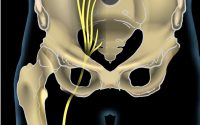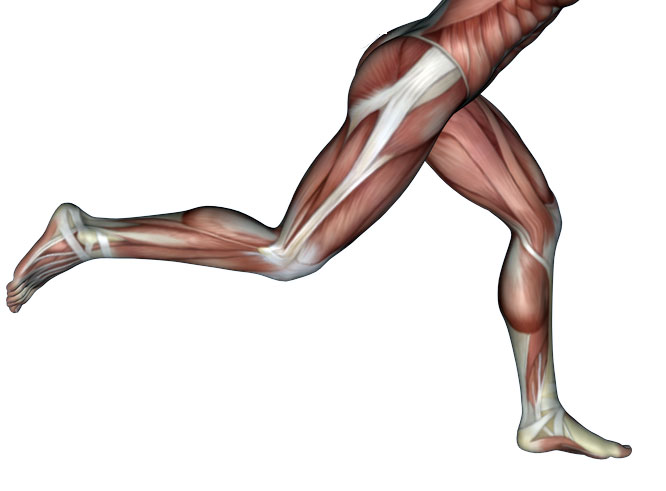Cell receptors in facial tissue
Cell receptors in facial tissue are exposed to an abundance of extracellular signals. The signal is recognised by the receptors, and this signal is decoded according to a complex pathway of intracellular signalling. This signal is translated to an appropriate response by the cell. According to the linked receptor, the signal molecules can respond differently.
The following is a summary of Caterina Fede’s lecture on “The cells of fascia and their receptors: how the fascial tissue responds to various stimuli” presented at the Fascia Research Online Summit 2020.
Sex hormones
One example is the sex hormones. Sex hormones affect connective tissue and extracellular matrix remodelling. From clinical practice, we know that women have a much more musculoskeletal pain with respect to men. In the literature, many papers explored this issue. For example, de Kruijf (2016) showed that chronic pain is more prevalent in women than in men. Lower sex hormone levels of women are associated with chronic musculoskeletal pain, independently from the lifestyle and other factors. Another paper by Hammar (1989) showed that female soccer players were more susceptible to traumatic injuries during the pre- and menstrual periods. But women who used the contraceptive pills showed a lower rate of traumatic injuries. Another paper by Konopka (2016) showed that some female athletes who had higher serum relaxin concentrations in the blood, had more than four times the risk of injury of ACL. These mean that the sex hormones have a role in the pain and in the connective tissue.
So we try to study if these hormone receptors are expressed in the fascial tissue. We try to demonstrate the expression of two hormones, estrogen, and relaxin, in the tissue. Cells isolated from fascial tissue were put in culture. We demonstrated that both the receptors are expressed in all the fascia tissue. The rectus sheath of the abdomen, the crural fascia of the leg, and fascia lata of the thigh expressed both receptors estrogen and relaxin. Also, in cells isolated from a fresh fascia tissue and put in culture, both the hormone receptors are very highly expressed. These were also validated by gene analysis. We compared pre-menopausal and post-menopausal women and showed that the expression is higher in the younger female.
Then we tried to stimulate the cells with different concentrations of the two hormones: beta estradiol and relaxine. In a normal female, relaxin is usually at a low level, but increased a lot during pregnancy, especially in the first weeks of pregnancy, and it remains high for all the pregnancy time. Estrogen is low in the post-menopausal period, and it increased in females during the menstrual period and also during pregnancy. We tried to stimulate the cells with different concentrations of these two hormones. We trialled first using beta-estradiol as estrogen. When the cells have a low level of estrogen, the collagen concentration is very low. But when we stimulate the cells with a high concentration of estrogen, the cells start to produce much more collagen. We analyzed the types of collagen that were present. When the estrogen is at a high level, collagen type I is lower than type III and fibrillin. This increase is with respect to the control cells. The opposite is observed when the estrogen is low, collagen type I is much higher than type III and the fibrillin. Another interesting point is that when we put estrogen and relaxin together, all types of collagen were present at similar concentrations. The cells produce less extracellular matrix.
These results let us conclude that when we are in a homeostatic situation, we have the right synthesis of the matrix collagen I, III, and elastic fibers. When the estrogen hormones are at low level, there is much more type I collagen, so the elasticity is reduced, and the tissue is more rigid. The opposite is true when the estrogen Ievel is high, collagen type III, and elastic fibers increase. Thus there is much more facial elasticity, but that also means that females can have more injuries during this period. When we have some imbalance in the hormone levels, this dysfunction can affect the fascia tissue.
Endocannabinoid
In another study, the scientists studied the effect of endocannabinoids receptors, which were found expressed in fascia cells, . The endocannabinoids are endogenous neurotransmitters. They have a lot of biological effects similar to marijuana. They can be generated in several sub-types, not only in the brain but in different peripheral tissues. They have energetic properties; they have the role of anti-inflammatory, anti-fibrotic, and modulate pain. The expression of these receptors on the fascia fibroblast means that they have a role in modulating the fascia fibrosis and the fascia inflammation. If the cannabinoid receptors are expressed by the fascia cells, it means that they can be stimulated by exercise, movement, manual manipulative treatments, and also by some drugs. If the endocannabinoid system can be modulated, it could also have a role in reducing inflammation and pain reduction.
The cells were stimulated in vitro using the agonist of the endocannabinoid receptor. After only 3-4 hours after treatment, the cells showed the occurrence of some vesicles. Inside the cytoplasm, in the extension of the cells, these vesicles were released in the extracellular environment. These vesicles were very rich in hyaluronan. This is a cannabinoid-mediated effect because these vesicles were only present when the cells were stimulated with the agonist of the endocannabinoid receptor.
When the same cells were treated with the antagonist of the cannabinoid receptor, there was no vesicle present. When the cells were treated with agonist and antagonist together, there was no vesicle present. Fascia cells can respond very rapidly to the cannabinoid system. Synthetic cannabinoid can lead to the production of hyaluronan-rich vesicles in only a few hours in vitro culture of fascial fibroblasts. Although the effect is temporary, it can affect the fluidity of the tissue.
This work demonstrates that myofascial pain can respond to cannabinoids, which are able to provide analgesic relief. The cannabinoids and their receptors on the fascial fibroblast cause a rapid production of HA, indicating that the cannabinoids may have an effect not only on pain perception in to central nervous system phenomena, but also direct peripheral effects, which result in modification of the structure and properties of fascial tissues.
In summary, fascia is a complex structure but it can be modulated. Only with a clear understanding of all the components of the fascial tissue, we can also understand the alteration of the fascia in a pathological situation that can cause pain in a patient. This fundamental knowledge allows us to understand how treatments, exercise, and lifestyle can lead to the healthy fascia.


